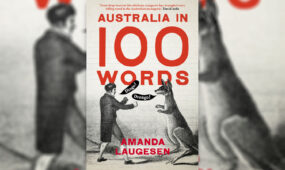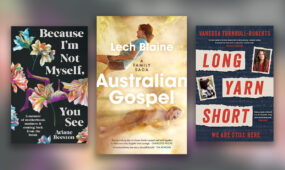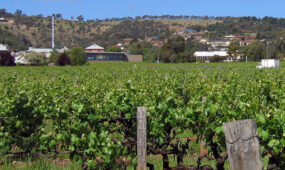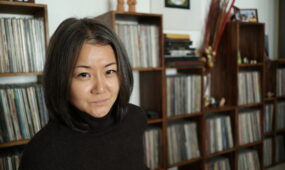Sorry and beyond: Investing in the healing process
Books & Poetry
To mark National Sorry Day, this extract from a new book on the stolen generations by Brian Butler and John Bond details how Australia’s efforts to reconcile with the First Australians compares with other countries still coming to terms with their colonial past.

Humanity is gradually recognising that there are limits to growth, and our current ways of managing our societies and economies are killing the planet. There is a growing quest for new approaches, and a recognition that Indigenous perspectives may have something to offer.
How can the Indigenous peoples be enabled to make their contribution? In Japan and Brazil, in Australia and Russia, and in many other nations, Indigenous communities are traumatised, struggling to recover from a history of persecution and, in many cases, forced assimilation.
The first step is to recognise the harm done. Australia, Canada and the United States have forcibly assimilated Indigenous people, and each country is now attempting, with differing degrees of government support, to overcome the harm. It is not easy to enable a community to thrive after two centuries or more of denigration. Can we work together on this, learning from each other, and from countries such as New Zealand and Norway, which have made substantial progress?
Australia is grappling with a situation comparable to that of Canada, but whereas Australia has put A$26 million into its Aboriginal Healing Foundation, Canada has put C$650 million. Compensation to the 80,000 residential school survivors has cost the Canadian Government over C$1.6 billion. Compensation to the 38,000 victims of abuse in the schools has cost more than C$3 billion. In total Canada has spent about C$8 billion (A$8.4 billion) on its residential school survivors in reparations and measures for healing. Australia has spent less than a billion. Australia’s Indigenous population is half that of Canada’s, but even so, the difference in funding is stark.
Canada has not done this purely from goodwill. In Canada the court judgements have tended to ascribe responsibility for the harm to the government and church authorities, whereas in Australia the most significant judgements have absolved these authorities of responsibility.
This may be costly to Australia in the longer term. Healing does not come cheap, but it is an investment with a strong economic return. Closing the Gap cost A$5 billion over 10 years, and would have substantially improved the health and educational standards of Aboriginal Australia. That would open whole new possibilities for a thriving Aboriginal contribution to the Australian economy.
They grapple with all the problems of other Indigenous peoples. But they are also finding solutions.
Canada’s First Nations communities illustrate the possibilities. The Blood Reserve in Alberta, home to the Kainai people, has a population of 4,700. They are led by an elected Council, they have their own police force, schools, health clinics, banks – all run by the Kainai themselves. They breed racehorses and pedigree cattle, and conduct a variety of other businesses. Their income from these enterprises in 2015/16 was C$35 million.
They are not alone. In that year, a study of 500 First Nation communities across Canada (out of a total of 633) found that the enterprises in those communities generated a total of C$2.3 billion. Among the enterprises is Tshiuetin Rail Transportation, North America’s first Indigenous-owned rail company, created by three First Nation communities in Northern Canada to run the local railway. Tshiuetin means ‘wind of the north’ in Innu, the native language of that region. In 2020 on Canada’s Atlantic seaboard, two Mi’kmaq First Nations communities bought Clearwater Seafoods in a deal with C$1 billion. ‘For 13,000 years, the Mi’kmaq have sustainably fished the waters of Atlantic Canada,’ said Chief Terrence Paul, ‘and today we are owners of a global leader in fisheries.’
And there are valuable examples among Native American communities in the USA. They grapple with all the problems of other Indigenous peoples. But they are also finding solutions. Native American communities which 30 years ago were mired in poverty are now prospering. In Mississippi the Choctaw Indians have created more than 6,000 on-reservation jobs in a host of tribally-owned businesses and are now the largest employer in east central Mississippi, importing black and white labour because there aren’t enough Choctaws to fill all the jobs. Meanwhile, the tribe has one of the highest rates of language retention in the United States.
In Oklahoma the Citizen Potawatomi Nation owns the First National Bank of Shawnee, Oklahoma, and other businesses, and is a major regional employer. The Confederated Salish and Kootenai Tribes in Montana oversee a successful, diversified economy based on agriculture, tourism and private enterprise. Non-Indians now study at their tribally-owned and -operated post-secondary institution because it offers the best education in the region. Cochiti Pueblo in northern New Mexico has built a successful economy based on recreational and retirement services. Yet this is one of the most traditional tribes in the country, still governed in ways similar to those the Spanish conquistadors encountered in the 17th century.
Professor Stephen Cornell of the Harvard Project on American Indian Economic Development stresses that, in the experience of American Indian communities, self-rule is a precondition for development. Self-rule, he points out, puts the development agenda and resources in indigenous hands, it links decisions and their consequences, and it supports accountability. The Harvard Project has concluded, from wide evidence, that indigenous communities who do not control their own affairs are unlikely to develop.

Get InDaily in your inbox. Daily. The best local news every workday at lunch time.
 This is an extract from the new book, Sorry and Beyond: Healing the Stolen Generations, by Brian Butler and John Bond, published by Aboriginal Studies Press. The book charts the growth of the grassroots movement that highlighted Australian policies that removed Aboriginal and Torres Strait Islander children from their families.
This is an extract from the new book, Sorry and Beyond: Healing the Stolen Generations, by Brian Butler and John Bond, published by Aboriginal Studies Press. The book charts the growth of the grassroots movement that highlighted Australian policies that removed Aboriginal and Torres Strait Islander children from their families.
Brian Butler, of Aranda and Luritja descent, was an ATSIC Commissioner for South Australia and, later, the state’s nominee for Senior Australian of the Year. He was chair of the National Sorry Day Committee. Both his grandmother and mother were taken from their families by government officials.
John Bond was secretary of the National Sorry Day Committee from 1998 to 2006. He is secretary of Initiatives of Change International.
Support local arts journalism
Your support will help us continue the important work of InReview in publishing free professional journalism that celebrates, interrogates and amplifies arts and culture in South Australia.
Donate Here




